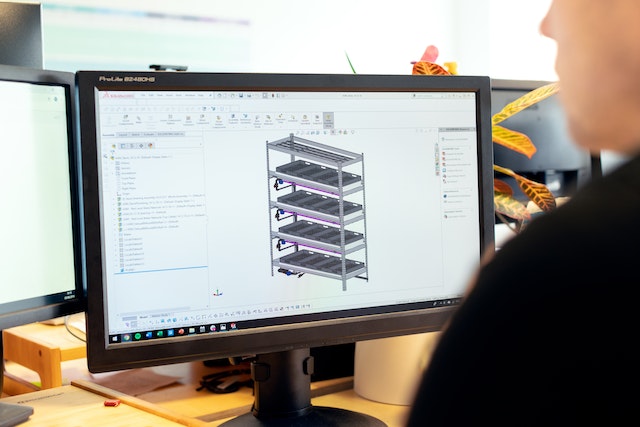The concept of Industry 4.0 is corresponding to a new industrial era, based on Industrial processes automation and shared remote Production Tools.
Sharing the overall production capacity is also possible with the deployment of an Online Cyber-Physical System helping customers to share their needs and technical requirements related to sub-contractors.
This concept embraces the idea of optimized production costs based on production on request, wastes reduction and just in time deliveries based on pre-defined production schedules.
Improving the production tools downtime (also named MTBF) and the repair time (also named MTTR) can be implemented by the deployment of monitoring systems, the definition of maintenance plan and by outsourcing the technical services activities scheduled.
It is also possible to use predefined products design and maintenance plans from existing shared databases for the definition of cost modelling based on manufacturers pre-defined maintenance schedules.
The key steps for a successful CMMS deployment:
Equipment Inventory & Digital Twins:
- The CMMS solution chosen should have an updated inventory of all equipment in productions and including all spare equipment in all storage areas.
- An extensive inventory will avoid to have non-functional equipment outside any maintenance plan.
- CMMS systems should propose a 3D virtual navigation of all equipment (also named Digital twins) for all the productions sites.
- The navigation by family of equipment will allows the QHSE department to focus on the deployment of safety procedures by category of equipment. To collect inspection reports and certificates of conformity required by law.
- The definition of digital twins will allow to attach Services agreements to family of equipment, including QHSE indicators, Productivity indicators (MTTF and MTTR) and the list of relevant spare parts to be qualified based on criticality and minimum quantity required based on their lead time and life cycle.
Work Orders and Planned Maintenance:
- the maintenance plan shall be created for all equipment recorded and shall be based on manufacturers recommendation and the technical teams’ capabilities.
- all measurement processes shall be created and attached to relevant work orders.
- All certificates of conformity shall be collected by equipment type, and stored in the CMMS, allowing to qualify all works carried out and the equipment status.
- The definition of conditional maintenance plan, based on measurement will allow to improve the ROI and to closely monitor key information about the equipment performance (KPIs).
- Defining degraded running modes should be in accordance with the equipment manufacturers to avoid the loss of warranty.
- Working on the planification of legal requirement based on the class of asset will allow to avoid any legal issues. For example, running pressure test on tanks, or periodically testing lifting tools.
Stocks Management and qualified spare parts:
- Asset management activity will require the purchase and storage of parts and raw material allowing a smooth process moving forward
- Discrepancy of data about the spare parts in stock shall be managed, at it may stop ongoing operations.
- Criteria such as quantity and status of the stored spare parts should be monitored as both criteria matter for the qualification of existing stocks.
- qualified spare parts and equipment should be linked to a maintenance plan and a service agreement.
Services contract definition and outsourcing:
- For each service provider or equipment manufacturer predefined rules for the provision of goods and services shall be defined.
- Defining a service agreement with services companies will allow to define the role and responsibilities of the parties involved, set scope of work, express the minimum qualification expected for the technician involved and defining the services delivery time.
- Defining an agreement for the provision of goods will allow to define the role and responsibilities of the vendors, set the minimum quantity expected and schedules for delivery, define the specifications and quality expected.
- Any agreement for the provision of goods and services shall include KPIs helping to monitor the performance of the goods and services purchased
- All parts and equipment shall be attached to a vendor and shall be identified and the minimum quantity shall be predefined based on criticality and the delivery time.
Fleet equipment monitoring and Reliability management
- Once the CMMS in place and the information provided by all third parties involved for all equipment and work orders carried out, the system should have relevant data to work with.
- Discrepancy of the data are usually due to spare parts removed from stocks without being attached to any WO or WO not closed out after the work is carried out.
- Built-in reporting solution exist and will show information such as equipment status, MTBF, MTTR, spare part consumption, lead time on spares and services, resources required by equipment to carry out the maintenance operations.
- Well know reporting solutions are Crystal reports for SAP, Watson analytics, Oracle analytics or Ms Azure analytics are alternative BI solutions allowing decision management based on data reporting.
QHSE Management
- Because providing safe environment for on-site workers really matters, the QHSE shall be involved to define and monitor the actions defined in the work orders.
- Each work order shall include information about the process to follow, protection equipment which are mandatory to carry out the work defined.
- Each measurement required to meet up the quality criteria pre-defined in the WO shall be express clearly as a goal. For example, max pressure, torque, temperature.
- All work permit and wire permit shall be managed in the CMMS to secure the workers work place.
- Any evacuation or emergency procedures can be defined as recommendation in case of identified risks and accident.
Managing offshore operations with a CMMS:
- When operating offshore the concern is that the drilling platforms and vessels move, so are not always accessible.
- So, to carry out the work services technician will need helicopter transportation from the shore and will subject to safety offshore training.
- Spare parts and equipment required will have to be imported into the location of work and be transported at sea by supply vessel.
- Once the work carried out the WO may need to be closed out once the technical team is back on shore as connectivity is not always available offshore.
- Meaning that periodical reporting shall be run once all work orders are closed out by the third parties involved.




